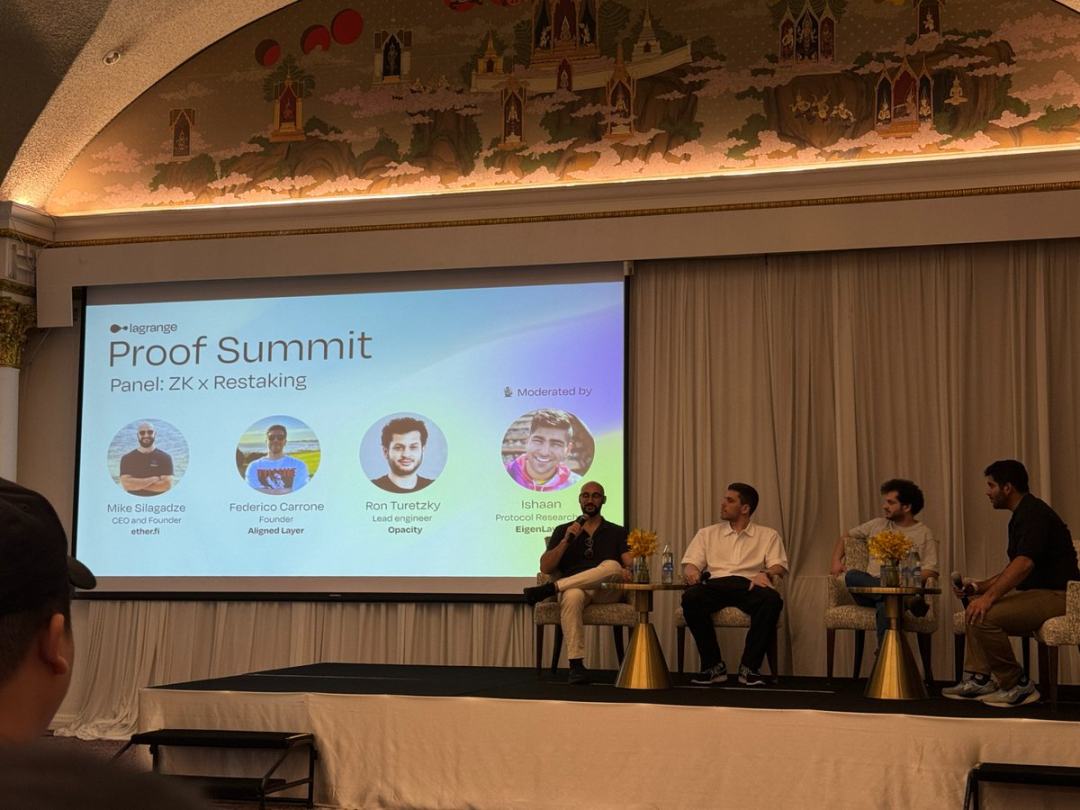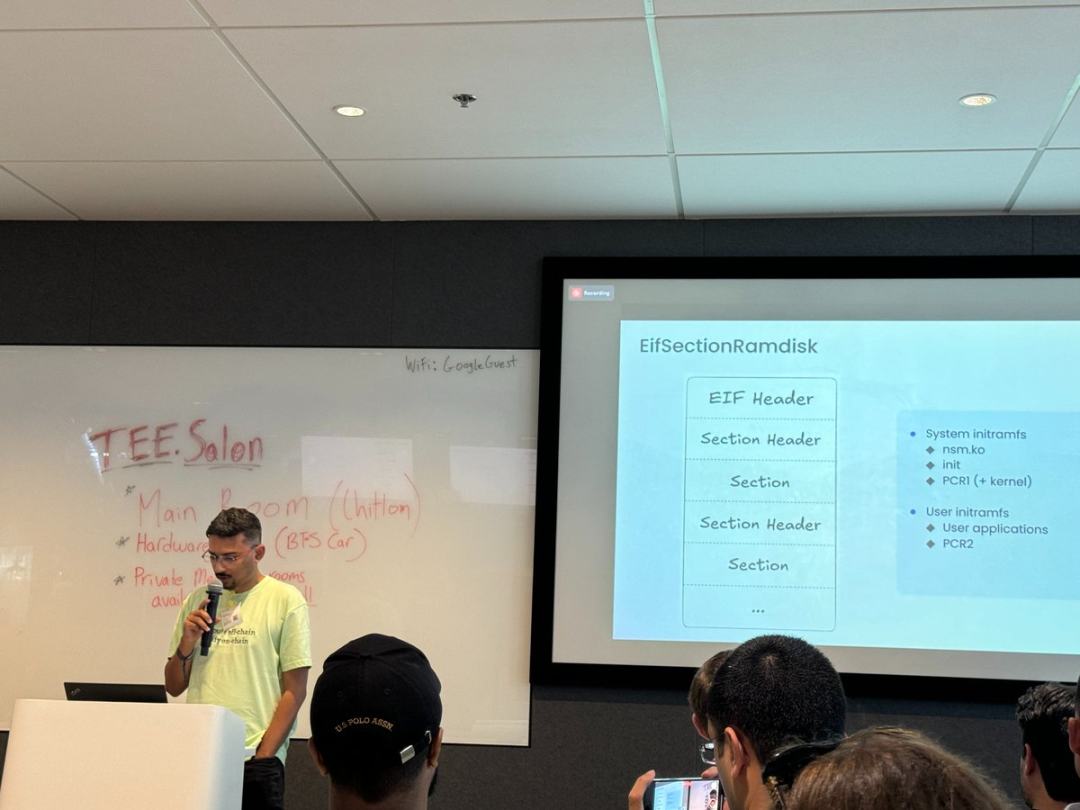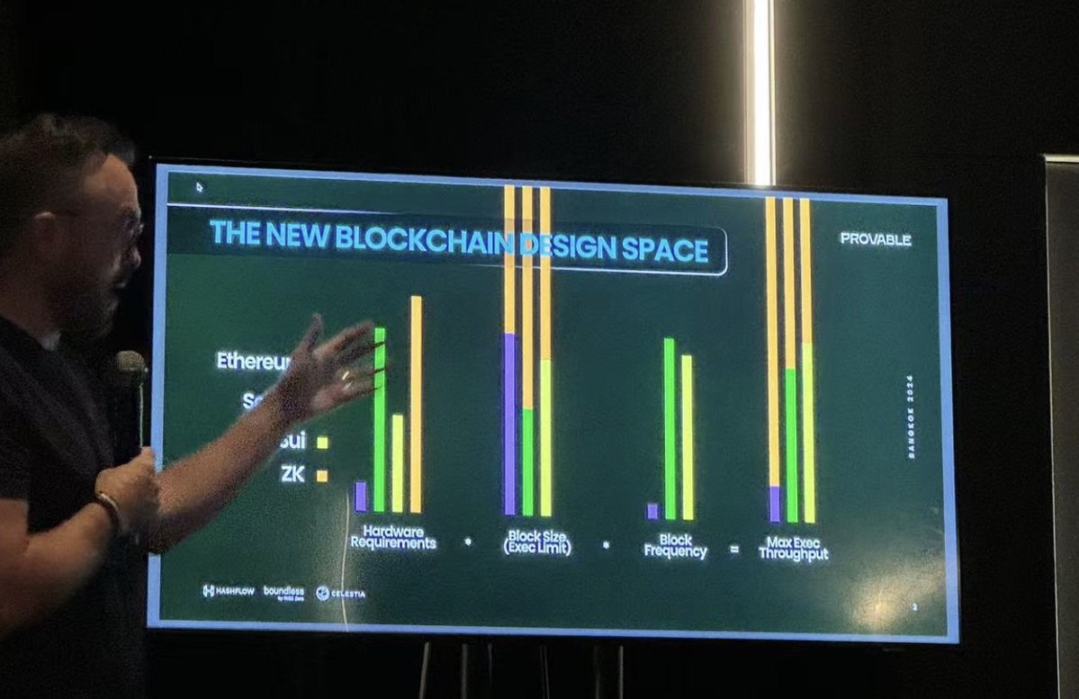ZK is stirring up a grand narrative of "Prove anything."
Written by: Haotian
In the past few days, I participated in the joint Proof Summit hosted by @eigenlayer, \altlayer, @RiscZero's Provable, @ProjectZKM, and ZKHub initiated by @GOATRollup, as well as ZK Accelerate and others. There were many events, and it was impossible to attend them all. However, I connected with the "ZK scene," and after going through it all, I felt like I was under the spell of ZK, very much enthralled.
Dreaming back to the ICO moment: Onchain anything ——> Prove anything
I remember during the ICO boom in 2017, there was a flourishing scene of "everything can be on-chain," such as: medical case data on-chain, the entire traceability chain of agricultural products from planting to the table, supply chain upstream and downstream transaction financing on-chain, and so on. Although later it was proven that not all scenarios could be realized on-chain, nor did they all need to be on-chain. However, the narrative paradigm of Onchain anything contributed to the prosperity of the bull market in 2017.

The feeling from these major ZK-focused events is similar; ZK is stirring up a grand narrative of "Prove anything."
The true value of ZK lies in the separation of off-chain computation and on-chain verification, allowing off-chain computation to maximize its computational efficiency, thereby minimizing the costs of on-chain storage and execution. ZK Tech serves as a "trustworthy bridge" connecting everything.
Looking back at the past two cycles, the trend has been to tell the story of "on-chain." Rollup layer2 is just the tip of the iceberg for ZK's value. After the ZK explosion, there will no longer be a boundary between on-chain and off-chain; there will only be a new paradigm of "verifiable computation."
At the same time, the innovative exploration of Prove Anything is quietly igniting. Verifiable computation games, identity verification, DeFi/RWA, privacy trading, voting governance, AI model verification, trusted proof for IoT devices, enterprise-level supply chain privacy guarantees, and other applications involving both off-chain and on-chain scenarios will all be covered.
AVS Economic Consensus System is Important for ZK
At the Proof Summit, I saw many fresh projects, such as: @alt_layer aiming to create a VITAL ZK proof system to provide ZK proof capabilities for OP-Rollup; @alignedlayer focusing on scalable ZK proof generation, exploring effective integration with OP Stack; @OpacityNetwork exploring data privacy and secure sharing infrastructure based on VDN, zkTLS, MPC, etc.; and @lagrangedevProver Network aiming to establish a dedicated proof service layer between L1 and L2 to provide a unified shared proof infrastructure for different ZK proofs.

I previously analyzed Eigenlayer and its AVS service paradigm as representing the future of Ethereum. If that was just a prospect at the time, I received validation at this conference that the improvements altlayer wants to make for OP Fraud Proof need to be based on AVS, and the consensus for the unified proof service layer that Lagrange wants to create relies on AVS.
The "secure consensus" provided by AVS, which can be commoditized and packaged, will help ZK quickly build several middleware protocol service networks, facilitating the connection between a series of rapidly emerging ZK infrastructures and existing pure on-chain VM environments.
Needless to say, everyone can feel that the AVS proactive verification service system initiated by Eigenlayer is actively supported by many emerging ZK forces. Although it seems very early now, let the bullets fly for a while.
TEE Verifiable Execution Environment Gives ZK Wings
The TEE Salon event lasted a whole day, and I didn't have time to listen to it all. However, unexpectedly, the venue was Google's cool office in Bangkok, and I was quite excited to attend this event out of a spiritual pilgrimage to the world's major internet companies.

Google's Confidential Computing cloud computing product line, Intel's SGX, TDX technologies, etc., are all looking for suitable entry points in the new TEE narrative. The logic is simple; just look at the ambiguous relationship that Alibaba Cloud, Huawei Cloud, and Tencent Cloud have had with blockchain over the years.
In my view, ZK + TEE are the guardians of the verifiable computing era. ZK is responsible for computing proofs and verifying information transmission, while TEE provides a trusted execution environment and data privacy.
For example, Aztec's dark pool, the VPU hardware innovation chip that Fabric aims to construct, and more projects are increasingly integrating ZK and TEE along with other MPC and FHE encryption algorithms to accelerate the arrival of a new verifiable computing paradigm. Although TEE still feels too traditional, it will certainly lend a helping hand on the path of ZK's popularity.
zkVM Provides Major Infrastructure for the Popularization of ZK Tech
At the zkHUB special event, I was dazzled by the numerous ZK projects such as ZKM, RiscZERO, Cysic, Mina, Goat Network, Succinct, etc. The chaos I refer to is not the concept of "too many," but rather the astonishing depth and breadth of the solutions covering both upstream and downstream.

Many people may have seen some innovations being made by the Risc-V virtual machine in @VitalikButerin's articles. Here, I saw engineers from @ProjectZKM explaining zkMIPS, a general-purpose zkVM that simplifies the ZK development process, reducing the time and complexity of developing custom ZK circuits and providing a standardized platform for ZK application development.
Unlike Risc-V, which leans more towards hardware processor architecture, zkMIPS is a streamlined instruction subset that focuses on software and can greatly optimize the scenarios required for generating zero-knowledge proofs.
zkVM stands out in the context of modular narratives. Many people know that zkVM is more promising than zkEVM, as its core logic lies in the fact that future ZK will definitely break away from the original purely on-chain connection paradigm.
Therefore, zkVM, which can connect all AltVMs and allow Ethereum, Bitcoin, etc., to become a unified settlement layer in a full-chain environment, and can build a liquidity layer that transcends technical architecture limitations, is truly important.
I believe that at the end of the EVM-Compatible narrative, the new zkVM will release the major infrastructure for connecting everything through verifiable computation, which will be a continuous hotspot for many years to come.
That's all.
Finally, let me conclude with a quote from the VP of RiscZERO, who said that the blockchain we are in is transitioning from the "server era" represented by Ethereum and Solana to a brand new "Cloud Era."
Putting this statement into the current context of "modularization, chain abstraction, zkVM," which are being dissected and reconstructed in the blockchain development environment, you will surely understand what this statement is exuberantly and vocally expressing.
免责声明:本文章仅代表作者个人观点,不代表本平台的立场和观点。本文章仅供信息分享,不构成对任何人的任何投资建议。用户与作者之间的任何争议,与本平台无关。如网页中刊载的文章或图片涉及侵权,请提供相关的权利证明和身份证明发送邮件到support@aicoin.com,本平台相关工作人员将会进行核查。



